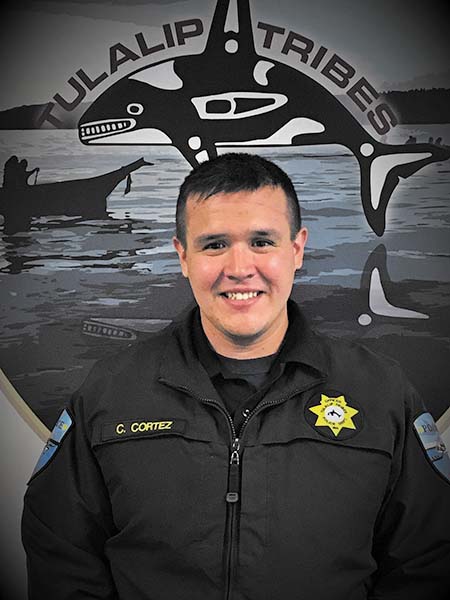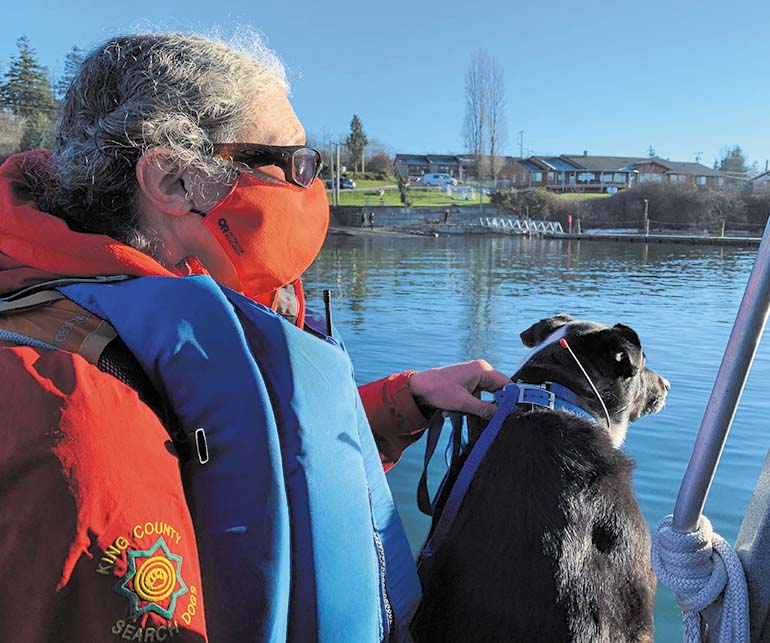
By Micheal Rios, Tulalip News
The tragic loss of police officer Charlie Cortez, who died in the line of duty on November 17 after his patrol boat capsized, has been felt near and far. A 29-year-old hero and father of two young children, his family and friends offer prayers and well wishes to the recovery teams who depart Tulalip Marina shortly after sunrise every day in search of the fallen Tulalip tribal member.
“To date, we’ve used some of the best technology in the world to aid in our search and recovery mission,” explained Chris Sutter, Tulalip Police Chief. “Advanced underwater sonar imaging of the ocean floor, underwater drones, air resources including fixed wing aircrafts, helicopters, and unmanned drones, and, our most important resource of all, thousands of hours of manpower by dedicated first responders, fishermen, and civilian volunteers.
“We’ve done our best to cover all relevant search areas , from north of Tulalip, Port Susan area to Camano Island, top end of Whidbey Island, both sides of Hat Island, up the Snohomish River system, and all the way down past Mukilteo looking for our lost officer,” he continued. “We have not turned away any resources, as we’ve had many vessels and specialized search teams on the water searching far and wide.”
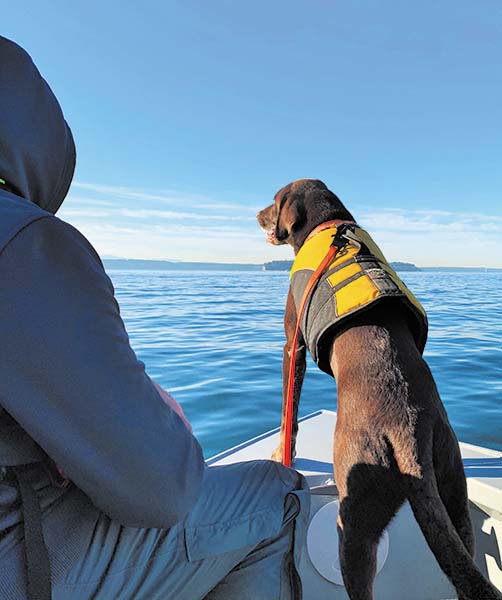
One such resource is the King County Search Dogs. A part of the King County Search and Rescue Association, the highly specialized canine unit assists law enforcement agencies with missing person searches and human recovery in the wilderness and urban settings. A team of ten (four dogs, four handlers and two support) joined Tulalip’s recovery efforts for Officer Cortez on December 5.
The search dog unit were briefed by Chief Sutter and Commander Robert Myers at the local marina before being transported to the primary search area by Fish and Wildlife boat operator supervisor Bernie Edge and Tulalip citizen Sam Davis.
The extraordinary dog-handler teams are trained for effective and efficient searches thanks to the four-legged companions’ possession of up to 300 million olfactory receptors in their noses, compared to about six million in people. The part of a dog’s brain that is devoted to analyzing smells is, proportionally speaking, 40 times greater than the average human.
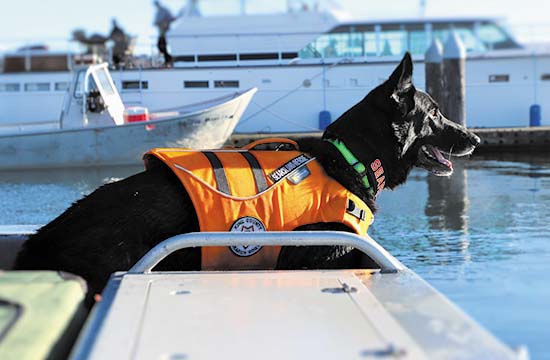
Dogs’ sense of smell overpowers our own by orders of magnitude – it’s 10,000 to 100,000 times as acute, scientists say. “Let’s suppose they’re just 10,000 times better,” says James Walker, former director of the Sensory Research Institute at Florida State University, who came up with that jaw-dropping estimate during a rigorously designed, oft-cited study. “If you make the analogy to vision, what you and I can see at a third of a mile, a dog could see more than 3,000 miles away.”*
Three super powered snouts actively worked the waters of Possession Sound, between Port of Everett, Priest Point and Hat Island, while a fourth roamed on land in search of any possible leads. Dog handler Joan Hitchner, an 18-year vet with search and rescue, trailed 7-year-old R2 as he traversed nearly six miles of sand dunes, boulders, a horde of driftwood, and wetland sniffing for viable scent trails on Jetty Island.
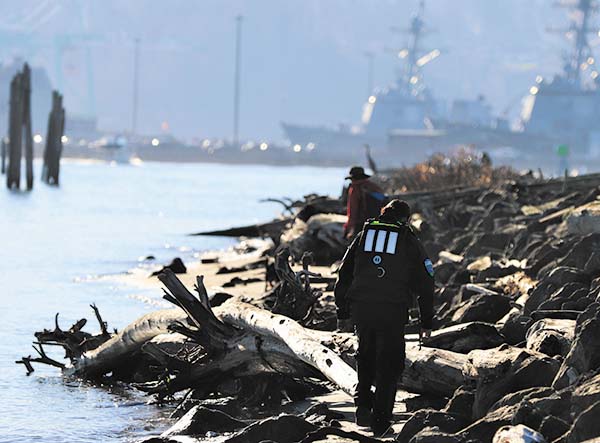
On water, the search dogs literally stood on bow and stern of two separate boats while being taxied back and forth along the coastal waters for hour after hour. With noses held high, they processed the Possession Sound environment for any trace of Officer Cortez.
“Recovery efforts from water, especially the ocean, is inherently challenging because water is in a constantly changing state,” said dog handler Josh Gerstman, a 23-year vet with search and rescue, while beside his 8-year-old chocolate Labrador, Natick. “Fluctuating water temperatures, ocean depths, wind currents, turbidity and tidal impacts are all variables that cannot be understated. Our dogs’ sense of smell is incredible and they adhered to their training admirably under these conditions.”
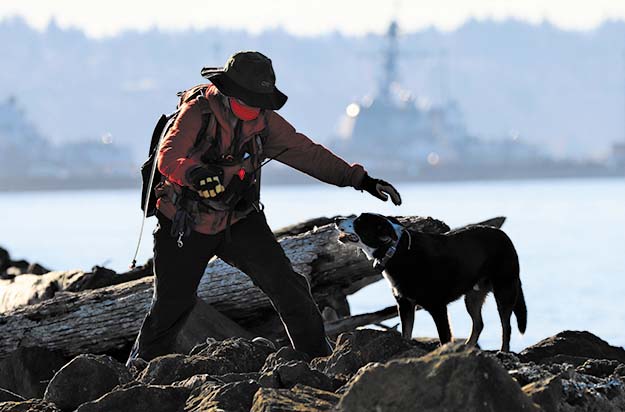
After their day on the water and along the coast, the search and recovery teams reconvened at the Tulalip Marina to debrief. Information received from the search dogs will be further analyzed with all other search effort information logged to date.
“Each day for the past three weeks, we’ve had different teams from a variety of local, regional and state agencies participate in our search and recovery mission,” reflected Chief Sutter. “Having the canine search team out today really gives us hope as we continue to bring in as many resources as we can to help locate and recover Officer Cortez. We are grateful to receive support from our neighboring King County Sherriff’s Office and every other community partner who has dedicated time and resources to support us.”
In the three weeks since Tulalip lost its first ever officer in the line of duty, the Tulalip Police Department, in partnership with Fish and Wildlife staff and countless fishermen, remain committed to bringing Officer Cortez home. Their exhaustive efforts show the depth of this community’s love for each other and of the brotherhood of law enforcement. The search continues.
*Source – https://www.pbs.org/wgbh/nova/article/dogs-sense-of-smell/
